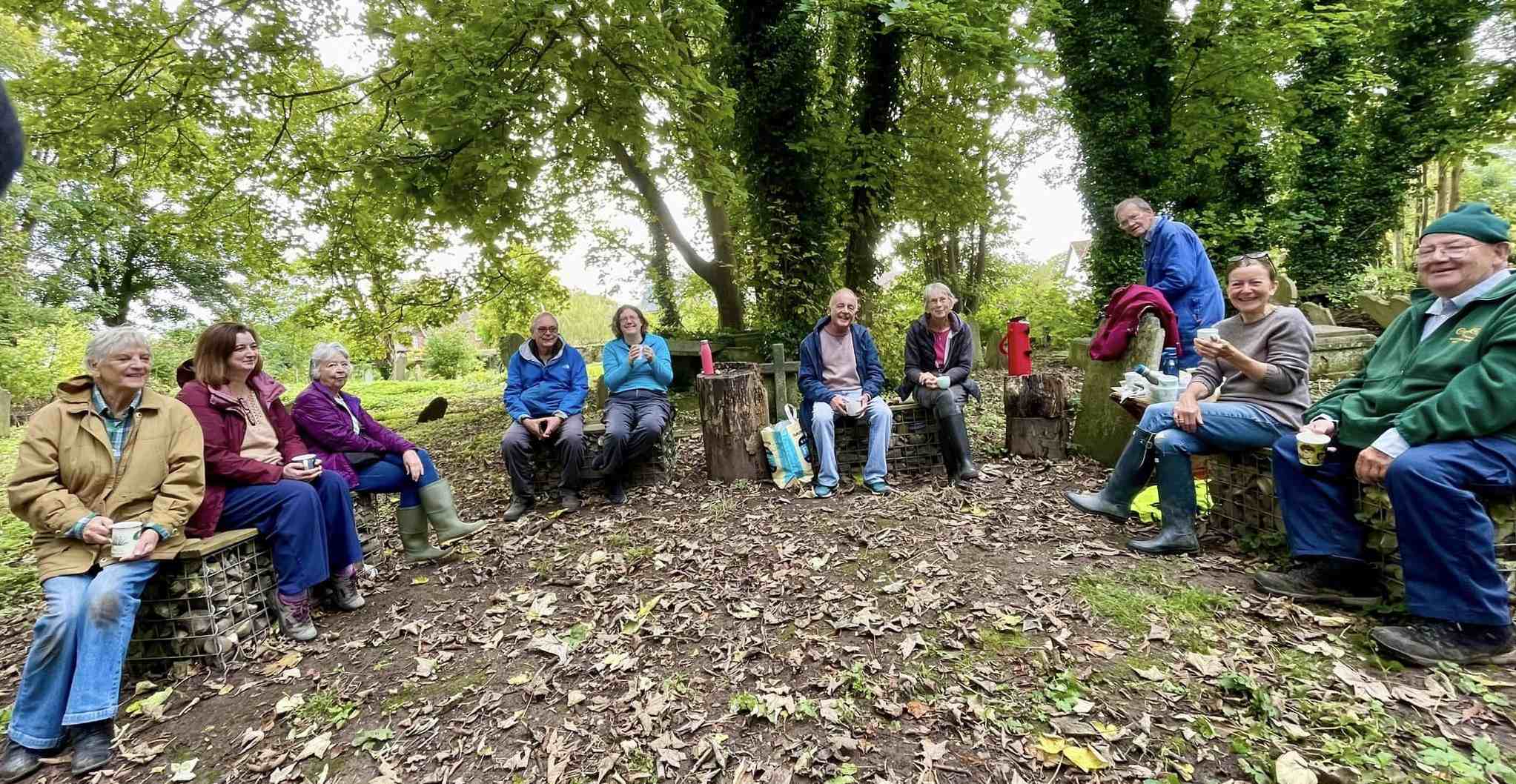Happy New Year
Thanks to all our graveyard friends who volunteered during 2024. Their efforts have made St Giles Hill Graveyard a better place. We hope you all had a great Christmas and looking forward to 2025 wishing you a wonderful New Year.
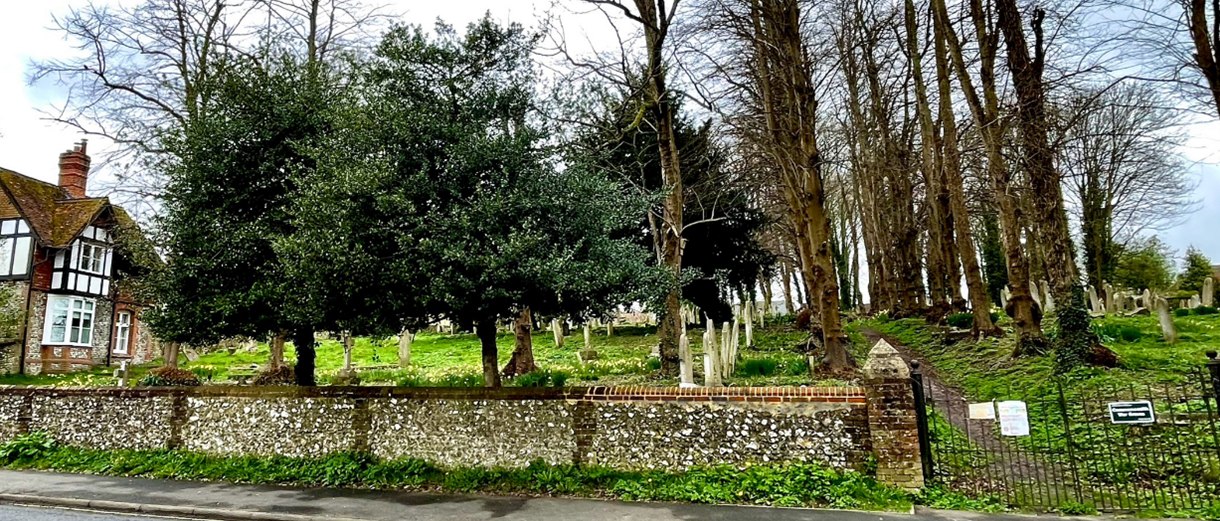
Friends of St Giles Hill Graveyard had an eventful 2024. We have had excellant attendance of volunteers at workdays and continued support of our activities from Winchester City Council (WCC). The weather as usual has played its unpredictable part with this year's rainfall well upon the average for the last 10 years, and with few cold or hot periods. This has meant we had an exceptional year of growth that kept the strimmers and mowers busy.
Some of this year's activities:
At the beginning of the year, we planted three Dutch Elm Disease resistant Elm saplings (cultivars Lutece and Azemuz). This is a part of a "bring back" the Elms project (the saplings were paid for by Winchester Rotary). The plantings in part mitigate for lost trees on our site. They are doing very well.
Early in the year, FSGHG undertook a major review of our Management Plan to align it with WCC initiatives. The plan can be found at this link on the website.
At the end of April, WCC removed many Sycamore trees (totaling 16 trucks) from along the southern boundary wall of the graveyard. This created a lot of disturbance and biomass to be managed. Small branches were chipped for use on paths etc. The larger trunks were cut into smaller chunks some of which were later taken for firewood by neighbours. We don’t like to see trees being taken down but on the plus side, it produced more open areas for meadow development.

Hogweed roots
The persistent wet has meant that Hogweed which currently covers around 50% of the graveyard has been a particular nuisance. Not only because it suppresses the growth of other species of plant, but also because the sap can burn if got on the skin and exposed to sunlight. People who strim vegetation are particularly prone.
We have used a few methods to reduce its dominance. These include early deadheading and collection of all seed heads, the placement of plant suppressing material temporarily over graves, and, targeted herbicide. However, it’s a deep-rooted plant and sometimes the only way to get rid of it is to dig the roots up.
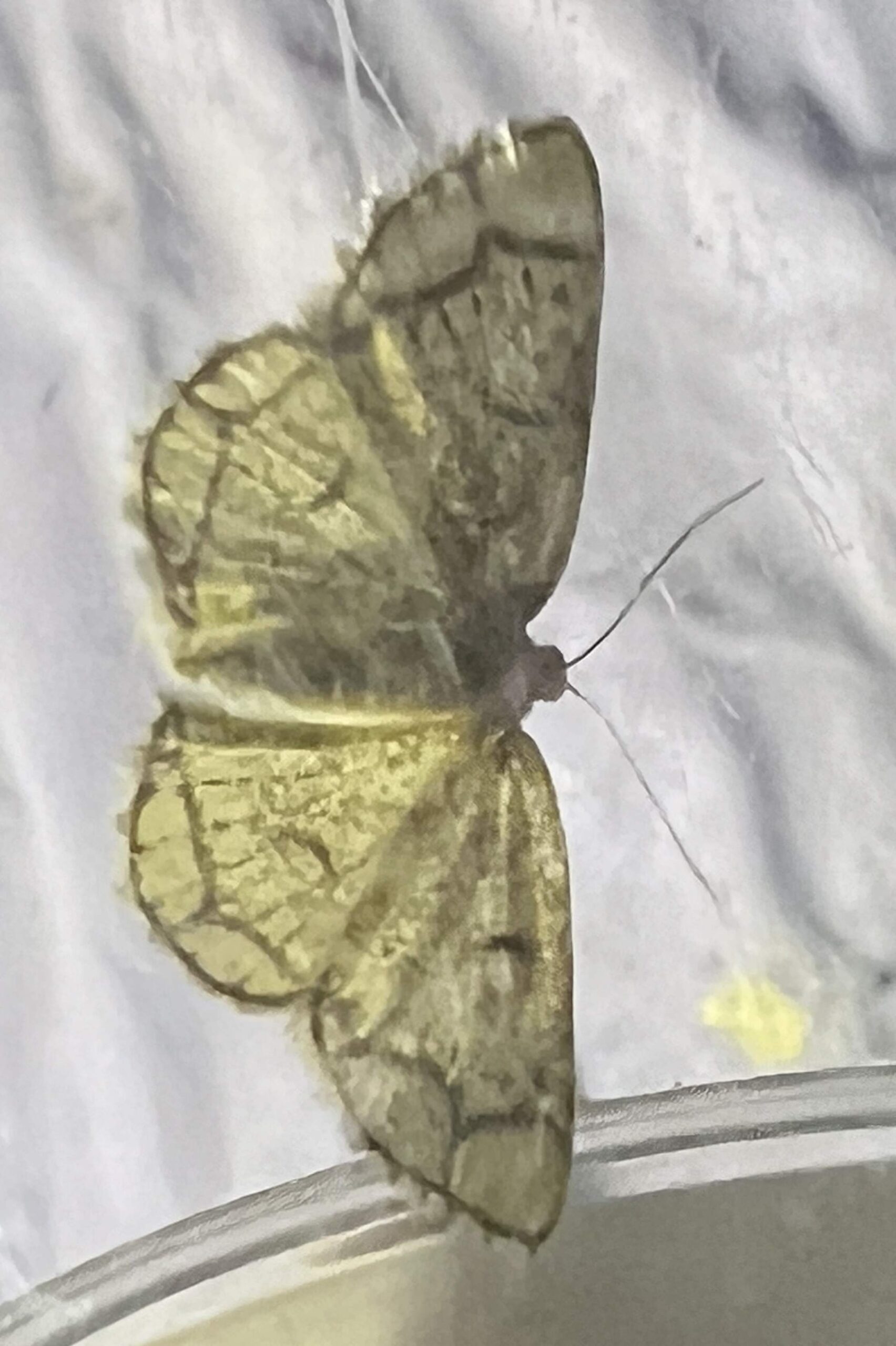
Ringed border (Stegania cararia)
Moth Night was held on the 29th of June 2024. Moth traps were set up around the gabions. Whilst the total tally of 57 moth species was below expectation for the time of year it was not bad considering it has been an overall poor year for Lepidoptera. Also, we had the fortune to attract a rare moth - The Ringed Border. This moth is found from France to Russia but is an immigrant to the UK. It lives in damp forests the larval foodplant being Poplar. The moth usually flies from the end of June to the end of August. There have only been a few occurrences of this species in the UK. Another sighting occurred in August 2024 in Sussex and was reported by the BBC.
In August of this year two colonies of Striped Lychnis (Shargacucullia lychnitis) were again spotted in the graveyard. This moth is a UK BAP (Biodiversity Action Plan) Priority Species and is being encouraged by WCC. The adult moth is rarely seen as it is nocturnal. It is more likely to be seen in the larval stage owing to the striking colour of the caterpillars. The larvae were first observed in late July 2022.
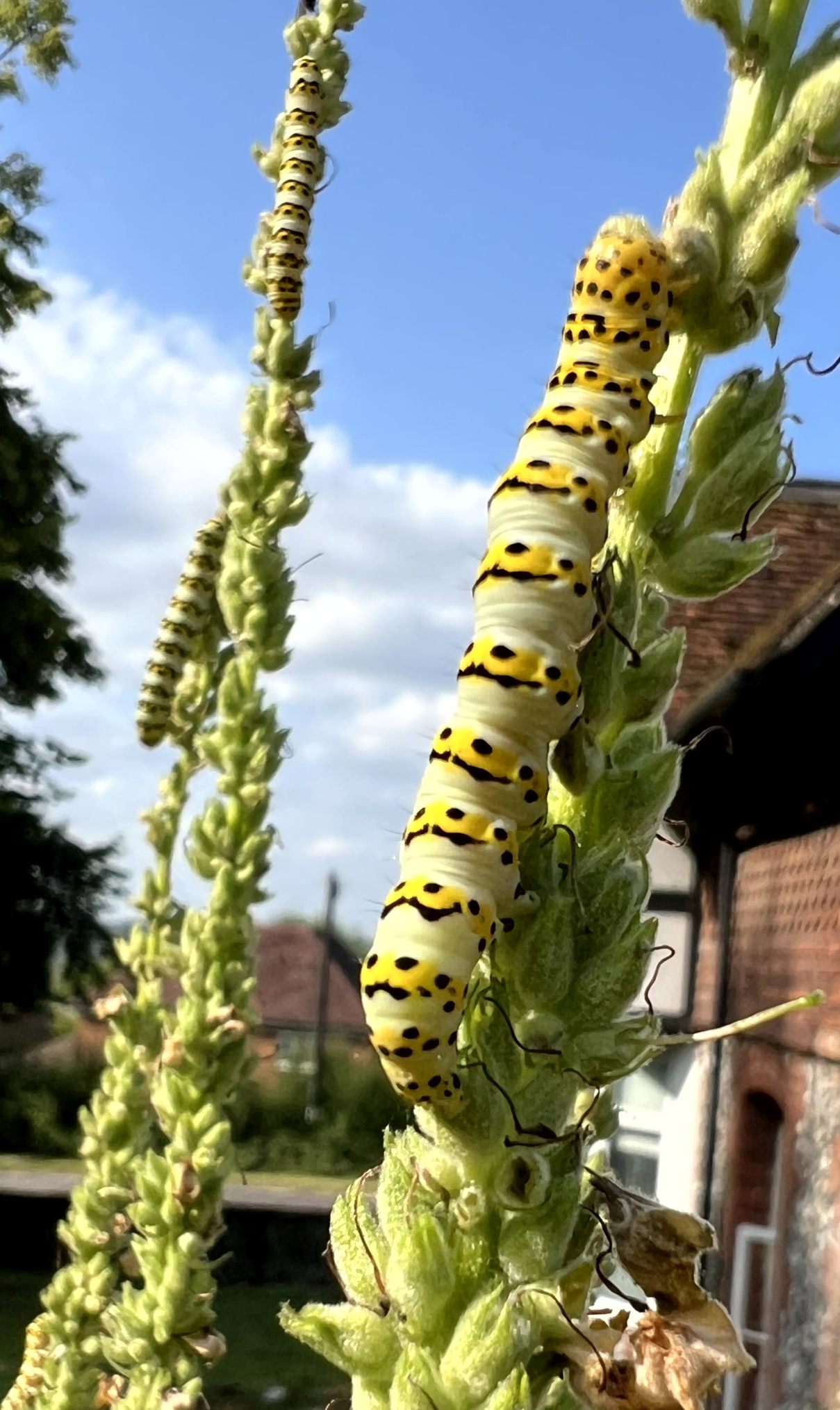
Striped Lychnis (Shargacucullia lychnitis)
This year our volunteers have prepared a lot of ground for sowing meadow grass and wold flowered. A patchwork of areas around the graveyard has now been completely cleared of roots prior to seeding or adding plug/potted plants. This year we have concentrated on the North-western segment of the site where Hogweed is rampant. Areas cleared in the late summer already have good germination of the meadow mix that was sown. We will need to wait until spring to see of the areas sown later will germinate.
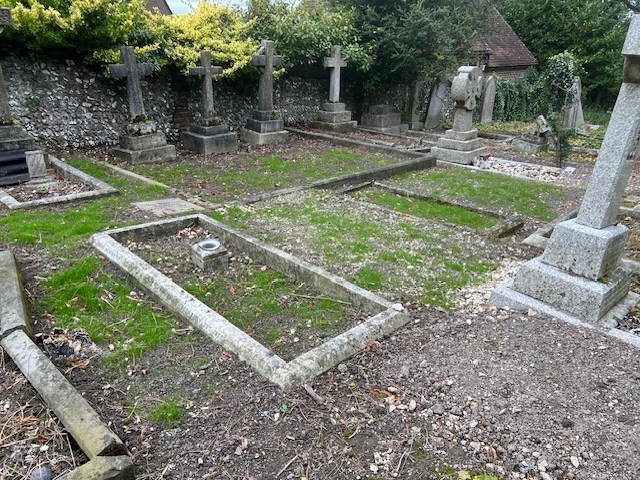
Seeded gound
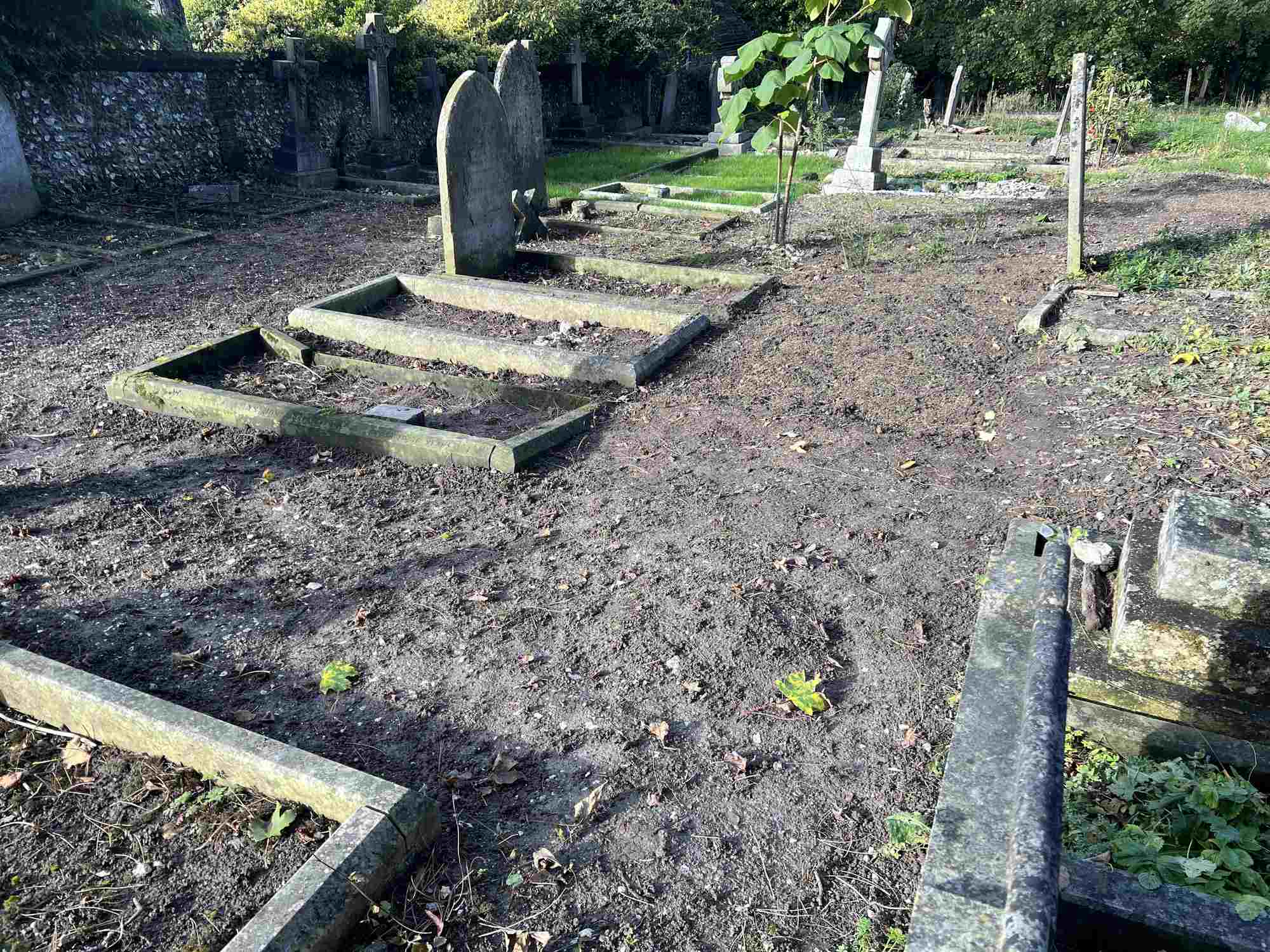
Cleared ground
Finally thanks for the support given by Coral Rogers and Andrew Turner of Winchester City Council and their team from Id Verde, the “Two Dave’s”.
